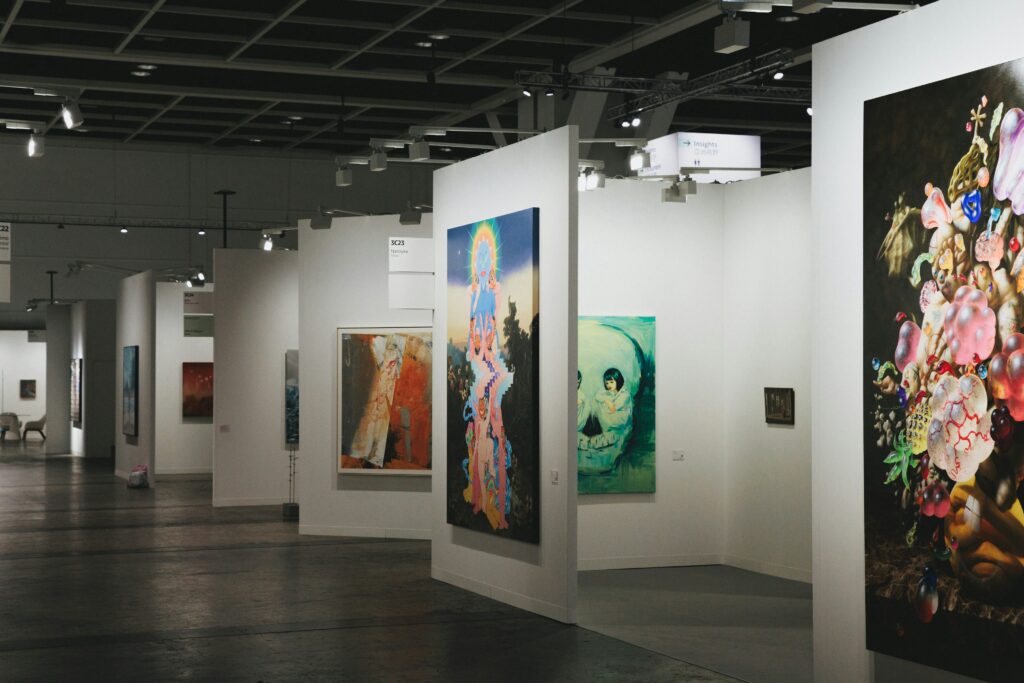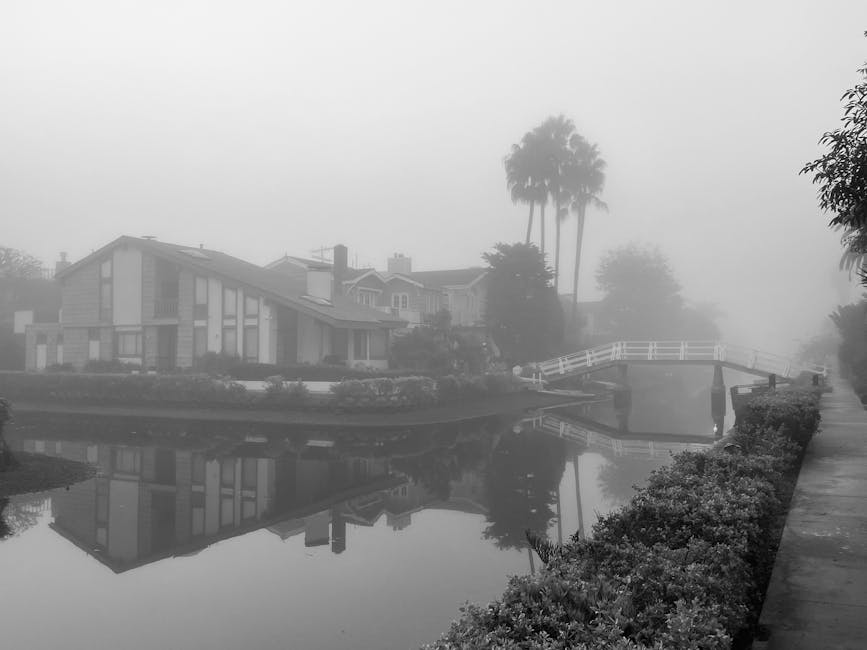Immersive Audio at The Tate Modern, London
Where Art Listens Back
Located in one of the world’s most iconic contemporary art spaces, this installation at The Tate Modern isn’t just something you see — it’s something you interact with. The work uses sound and motion to respond directly to the presence of visitors.
What Makes It Unique
This exhibition is powered by motion-triggered soundscapes that shift depending on how people move through the space.
- Sensors detect the location and speed of each visitor
- Audio elements change in real-time based on these movements
- Everyone’s experience is distinct — no two visits are exactly the same
Bridging the Physical and Intangible
The beauty of this piece lies in how it connects the physical presence of a visitor with invisible feedback loops.
- Viewers become participants, not just observers
- The art adapts and evolves constantly
- It demonstrates how space and sound can create an ongoing, silent dialogue
The Viewer Experience
As visitors move, the room almost speaks back. It becomes an ongoing conversation where you are both speaker and listener.
- Standing still may quiet the room
- A sudden movement may trigger dramatic shifts in tone or texture
- The result is a deeply personal, almost meditative interaction with sound and space
Where Technology Blooms: TeamLab Planets, Tokyo
A Living Wall of Nature and Innovation
Step into an immersive installation at TeamLab Planets in Tokyo, where art, technology, and nature intertwine. One of the standout exhibits features a massive wall covered in flora that appears to come alive as visitors approach.
Responsive Flora: More Than Just Visual
This isn’t just a static display. The wall reacts dynamically to human proximity:
- Proximity Sensors: Embedded technology detects the movement and position of people.
- Blooming Animation: As individuals walk closer, the digital plants bloom in real-time, offering a surreal and vivid spectacle.
- Scent Integration: Soft fragrances are released in tandem with the visual effects, turning the interaction into a multi-sensory experience.
Nature Enhanced by Digital Precision
The harmony of nature and technology here prompts deeper reflection. As visitors interact with the wall, they’re reminded of the delicate responses inherent in ecological systems. The installation doesn’t just entertain — it invites mindfulness about our role in the balance of nature.
Audience Takeaway
Visitors leave with more than just stunning visuals:
- A renewed awareness of the environment’s responsiveness
- A peaceful, meditative state fostered by the calming sensory design
- A reminder that meaningful interaction is more powerful than passive observation
Defining Interactive Art: Beyond Static Visuals
Traditional art asks you to look. Interactive art asks you to step in, touch, move, listen—it wants your participation. It’s not about standing in front of a canvas with your hands behind your back. It’s about becoming part of the artwork. Whether it’s motion-triggered soundscapes, VR installations, or rooms that pulse with light as you walk through them, the line between viewer and creator is getting fuzzy.
Engagement is no longer optional. It’s the main event. Museums and galleries are evolving into immersive experiences because audiences want connection, not just observation. People don’t just want to see art—they want to feel it, react to it, even change it.
That shift has pushed creators to think spatially, sensorially, and socially. The result? Art that moves, responds, and sometimes even remembers you. It’s a different kind of storytelling, one where the visitor completes the piece.
At MoMA PS1 in New York, the line between viewer and art is dissolving. This exhibit doesn’t just watch you—it reacts to you. Visitors wear discreet brainwave readers that track neural activity in real time. As you walk through the space, the visuals around you change—subtly or dramatically—based on your mental state. No two experiences are the same.
That’s the point. The visuals are not preset scenes or loops. They’re live, generative expressions driven by your unique patterns of thought. One person’s anxiety might trigger a swirl of jagged reds. Another’s calm could unfold into soft blue light and fluid shapes. It’s deeply personal, and a little disorienting.
What makes this more than just a cool tech stunt is the underlying question: can we see what consciousness looks like? It pushes past traditional interactivity into a realm where perception and self-awareness are made visual. The installation doesn’t just observe human emotion or reaction—it rides alongside it, frame by frame.
The Rise of Immersive Vlogging Spaces
Vlogging in 2024 isn’t just happening online—it’s moving into physical space. Think pop-up rooms, interactive installations, mixed-reality sets. These new formats share common threads: deep immersion, live feedback loops, and moments that hit emotional pressure points. Viewers don’t just watch—they experience.
This push into real-world environments challenges how we think about content and performance. Traditional galleries and studios were built for passive viewing. These new spaces demand response. Lights shift when people speak. Storylines change based on audience decisions. It’s less museum, more sandbox.
The format shift didn’t happen overnight. It grew out of a need to stand out in crowded feeds and create memory-based loyalty. Static backdrops gave way to spaces that adapt, respond, and personalize. And while not every vlogger has the budget of a touring artist, even small creators are experimenting with physical setups that add layers to their storytelling.
How to Engage Critically with an Art Exhibit
When attending an art exhibit, it’s not just about observing the visuals—it’s also about exploring your response, asking questions, and analyzing what the artist is communicating. This balance between emotion and analysis is key to deeper engagement.
Key Questions to Ask While Participating
As you move through the exhibit, consider these questions:
- What is your immediate emotional reaction to the artwork?
- What story or message do you think the artist is trying to convey?
- What techniques, materials, or styles are being used?
- How does this piece connect to others in the exhibit?
- Is there a historical or cultural context that deepens the meaning?
These questions help you move beyond passive viewing and into active interpretation.
Emotional Response vs. Technical Lens
A powerful exhibit often evokes emotion, but it’s equally important to consider the craftsmanship and decision-making behind each piece. Balance your reactions by reflecting on both feelings and form:
- Take note of how the piece made you feel immediately
- Step back to examine composition, technique, and structure
- Consider how the artist’s choices amplify or contrast the emotional tone
Approaching art with both heart and mind widens your perspective and appreciation.
Helpful Resource
For a deeper dive into exhibit analysis, check out this guide:
How to Analyze an Art Exhibit Critically as a Viewer
It offers practical frameworks and tips for becoming a more thoughtful, active viewer.
Interactive installations are no longer fringe—they’re central. What started as a niche form of art has become a mirror for how people want to engage with creative work: actively, not passively. In the last couple of years, we’ve seen major institutions give serious space to experiential pieces, and this shift shows no signs of letting up.
Viewers aren’t just viewers anymore. They’re participants, collaborators, sometimes even the subject itself. This shift from audience to co-creator blurs the line between the art and the experience. It also reshapes what counts as meaningful work. A looped video on a wall might say something, but art that reacts to your movement, voice, or choices says something with you.
This isn’t just another trend. Interactive art is forcing the entire ecosystem—from curators to creators—to rethink the rules. It’s expanding the definition of what art can do, how it’s consumed, and who it’s for. And that has big implications for storytelling, vlogging, and digital content as a whole.




